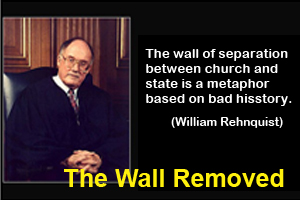

Mickey Edwards is a former eight-term member of Congress and chairman of the House Republican Policy Committee. After leaving office in 1993, he taught government for 13 years at Harvard and Princeton, and became a vice president of the Aspen Institute, where he directs a political leadership program.
For more than a dozen years, teaching government classes to graduate students at Harvard and Princeton, I filled my students’ heads with facts that no longer seem to be true. They have become “alternate facts,” or perhaps just outdated ones.
It has been my habit to begin each semester by slowly taking students through the Constitution, each article and section in turn, emphasizing not only each provision but why it was included. Fundamental to the constitutional process, I taught, was the unique delineation of authority and responsibility: the separation of powers that so cleanly distinguished American government from those that had gone before it. There were three branches, independent of each other, with varied duties and roughly equal. The greater power—overtaxing, spending, deciding whether to go to war, confirming members of the president’s Cabinet and justices of the Supreme Court—had been placed in the Congress, I said, because while the Founders had created a republic, they also added a sprinkling of democracy: The people would choose who would do the actual governing. I would underscore this point by noting the provisions that made clear the Framers’ deliberate rejection of a parliamentary system like the ones they had known in Europe, where legislative and executive power were joined. Here, it was to be the people, not the parties, that ruled, I told my students.
I believed it to be true—certainly it was what the Founders intended, and it was pretty close to the reality when I was first elected to Congress 40 years ago. But it’s no longer accurate. Instead of three equal, independent branches, each a check on the others, today’s federal government is, for practical purposes, made up of either two branches or one, depending on how you do the math. The modern presidency has become a giant centrifuge, sucking power from both Congress and the states, making de facto law through regulation and executive order. Yet the growing power of the executive is not merely a case of presidential power lust. For decades, the Supreme Court has consistently held that on most policy questions, foreign as well as domestic, statute trumps fiat (as recently as 2014’s decision Zivotofsky v. Kerry, the court declared that “the executive is not free from the ordinary controls and checks of Congress merely because foreign affairs are at issue”). But if Congress subordinates its constitutional duties to political concerns, what then?
Presidents have managed to accumulate such a prominent place at the top of what is now increasingly a pyramid rather than a horizontal structure of three connected blocks because for more than a generation, Congress has willingly abandoned both its constitutional responsibilities and its ability to effectively serve as a check on the executive even when it wishes to do so.
In the days after Donald Trump’s election, even after the new Congress was sworn in, congressional leaders waited eagerly to receive direction from the incoming president on budgetary, and even legislative, priorities. It is, at this point, a familiar pattern. When Barack Obama was president, Congressman Steve Israel, who had been tasked with overseeing House Democrats’ messaging, noted that Obama was, in fact, “our messenger in chief.” To a considerable extent, Republicans and Democrats in Congress have taken to seeing themselves not as part of a separate and competing branch of government, but as arms of their respective political parties.
Under the speakership of Newt Gingrich, in an attempt to demonstrate its new cost-cutting zeal, the Congress began to unilaterally disarm itself. Staffing (and thus expertise) was reduced. Foreign travel was scaled back, leaving members of Congress dependent on whatever information the executive branch wished to share with them about important international issues, or what they could discern from reading newspapers. That diminished capacity was further decreased in 2011, when Congress stripped itself of the ability to designate specific spending priorities through appropriations earmarks. As a result, members of Congress were not only deprived of an important tool for negotiating with their colleagues, but power over spending decisions—a fundamental congressional responsibility—was ceded to executive branch bureaucrats whose decisions about which government projects would be funded lacked any public transparency.
Congress’ abdication of responsibility predates Gingrich, however. The Constitution clearly provided that the United States would not send its children to fight and die in foreign wars unless the people themselves, through their elected representatives, thought the sacrifice necessary. Although presidents command the military, they do not decide when troops are to be sent into combat, except in the case of invasion or civil insurrection. Reacting to presidential overreach (beginning with Truman taking the nation to war in Korea without first seeking congressional authorization, and continuing through an undeclared war in Vietnam during the Johnson and Nixon years), Congress eventually stepped in, years later, in an attempt to reassert its authority but clumsily did the reverse: Under the 1973 War Powers Act, hailed by its sponsors as a means to restrain the executive, presidents were given free rein to go to war so long as they notified Congress first. Members of Congress congratulated themselves for providing that they could step in within 60 days to call a halt to a presidentially initiated conflict although it was not likely that Congress would pull back support with American troops engaged in combat. In that one spectacularly ill-considered action, the Congress stepped back from its single-most important obligation: deciding, as the peoples’ representatives, if and when America would wage war.
Other international issues speak to a similar trend of congressional retreat from constitutional responsibilities. During the just-ended presidential election, both Trump and Senator Bernie Sanders were sharply critical of international trade agreements that they believed disadvantage the United States. Since Congress is the only body authorized to write American law, it had acted over the years to provide safeguards on matters ranging from environmental protections to worker safety. But for decades, it has repeatedly surrendered its power to protect American interests in trade deals, bowing to presidents’ requests to simply accept whatever agreements the executive strikes with other countries (often without any congressional input). As a result, Congress has agreed to take up trade pacts on a “fast track,” denying its members the right to make any changes in the terms of the agreement, even though the Constitution explicitly gives Congress the authority to make the laws that govern international commerce. Congress has stripped itself of the power to insist that international trade be conducted in a way not harmful to American national interests and, specifically, the interests of American workers.
Americans have become accustomed to seeing Congress—especially when it’s controlled by the same party that holds the White House—wait for presidents to submit their proposed federal budgets before beginning serious discussions about spending decisions. But presidents prepare national budget proposals not because they are entitled to tell Congress what to do, but only because Congress has tasked the president with doing so in order to give the legislature a better sense of his thinking—and give members of Congress the chance to gather the information they need from the executive branch to decide how much to spend (and on what) and whether to increase taxes to pay for it. By stripping itself of sufficient resources to compete with the executive, Congress has made itself not the parent of the national budget, but a secondary player often forced by its own inadequacy to tinker at the edges with what presidents demand.
***
Of course, there remains another branch of government which, like the Congress, is theoretically and constitutionally separate and independent. But in reality the separateness is a bit fuzzy. That’s because even in this age of hyperpartisanship, there is at least one important area in which Democrats and Republicans think alike: both parties view the federal courts, and especially the Supreme Court, not as a neutral, Constitution-bound, arbiter, but as a de facto branch of the legislature.
Whether by a president, presidential candidate, or member of Congress, potential jurists are evaluated not on judicial temperament, quality of reasoning, or other examples of what were once considered “judicial attributes.” Today, the dominant question is how a nominee for the court will rule on controversial political questions. Last year, both Hillary Clinton and Trump, like presidential candidates before them, announced, as a part of their political campaigns, a “litmus test” for potential court nominees.
While many previous Supreme Court nominees were confirmed by the Senate with little or no dissent, Democrats and Republicans in today’s Senate announce their support or opposition at the instant of the nomination’s announcement—often even before a specific nominee is chosen— in anticipation of how the nominee will vote on questions of abortion, immigration, regulations, firearm ownership, and so on. Whether Merrick Garland or Neil Gorsuch, the question is not whether the nominee is qualified to function judicially, but whether he or she is “one of us”— that is, a fellow liberal or conservative. Each Supreme Court nominee is viewed as if he or she were to be a 101st vote in the Senate.
Today’s “separation of powers” is no longer between the three original, constitutionally created, branches of government, but between, on the one hand, a branch consisting of the president, his supporters in Congress and their mutual supporters on the federal bench; and on the other hand, a branch made up of the party in opposition to the president, his opponents in Congress and their co-partisans on the bench.
America’s Founders recognized the truth in Hobbes’ declaration that governments were needed to prevent abuses of the weak by the powerful. But they recognized that government, too, would need to be prevented from committing its own abuses—hence the need for the sometimes frustrating but nonetheless necessary divisions of authority between the state and federal governments and between the branches of the federal government. That is the system described in the Constitution and the system I taught. But it is not the system by which America operates today—a persistent war between competing political clubs.
I taught my students a system of government based on the Constitution. I thought I was teaching about current events. Instead, I now realize, I was teaching ancient history.
Download







